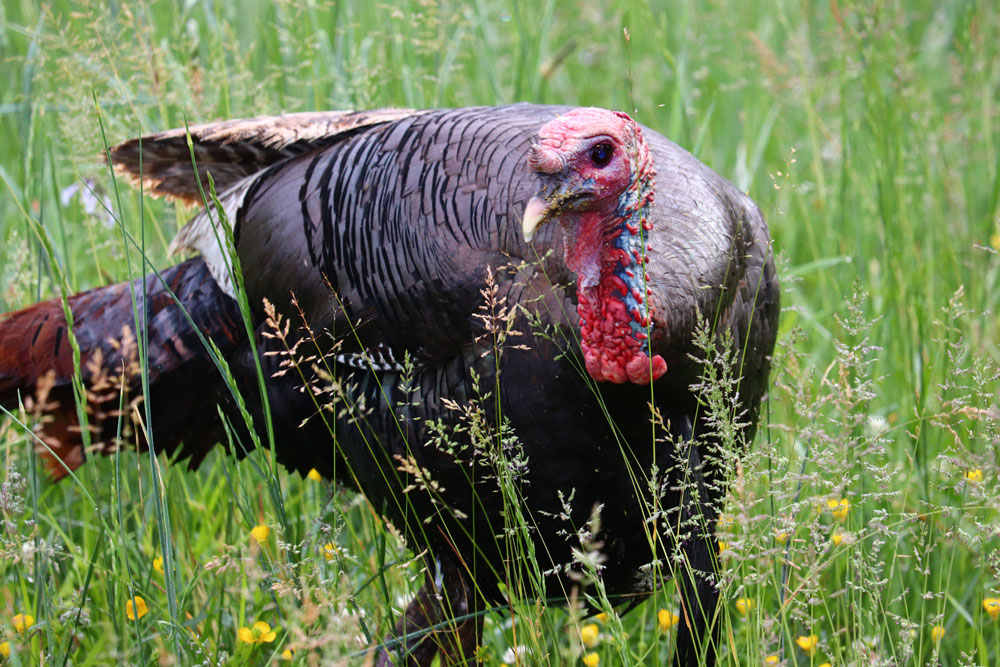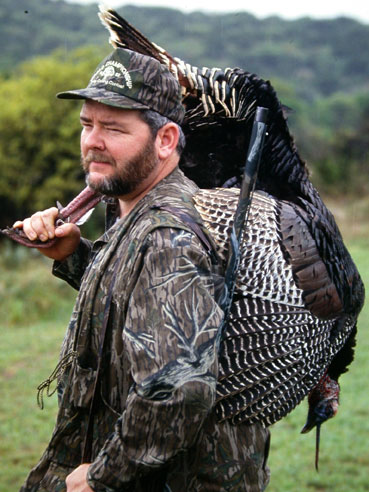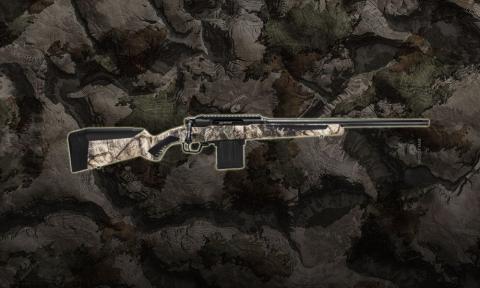Hunt Where There Are Turkeys
provided by John E. Phillips
Ronnie “Cuz” Strickland has been hunting wild turkeys for more than 50 years. When he first started working as a videographer for Mossy Oak, Cuz was traveling, filming and calling turkeys for about 72 days a year for many years. Today, Cuz is Senior Vice President of Media Services at Mossy Oak in West Point, Mississippi, and still is one of the best turkey hunters ever.

There’s no real secret about how to find and take turkeys. The first thing I’d advise a new turkey hunter to do is to find some private or public property that has turkeys on it that he or she can hunt. In the past, turkey hunting was a tough sport to get into – often because there weren’t very many turkeys, and the people who knew how to hunt and take them were like magicians who wouldn’t share the knowledge of how to work their tricks. Today, there are many places to learn how to turkey hunt, so that’s far easier than in the past — especially when I started learning.
All Turkey Hunters Make Mistakes
In my hometown of Natchez, Mississippi, only two turkey hunters were in the town: the high school football coach and the barber at the Rebel Barber Shop. Neither of them were much on sharing information about turkey hunting. Back then, the only way I could learn how to turkey hunt was by reading outdoor magazines. Today, there are videos, TV shows and outdoor YouTube channels you can watch, and books you can read and study where you absolutely can learn how to turkey hunt without even going into the woods.
 I think, too, often beginners get caught up into thinking they have to be expert turkey callers before they can go turkey hunting, but that’s just not true. Turkey calling is really overrated when you’re thinking about successfully taking a gobbler. No doubt there’s an advantage to being a turkey caller, but without question, the number one thing that a would-be turkey hunter must have is he or she must have found an area that has turkeys on it. The easiest way to pinpoint a place to turkey hunt if you don’t have one is to call the Game and Fish Department of your state and ask them about the best places to turkey hunt on public lands.
I think, too, often beginners get caught up into thinking they have to be expert turkey callers before they can go turkey hunting, but that’s just not true. Turkey calling is really overrated when you’re thinking about successfully taking a gobbler. No doubt there’s an advantage to being a turkey caller, but without question, the number one thing that a would-be turkey hunter must have is he or she must have found an area that has turkeys on it. The easiest way to pinpoint a place to turkey hunt if you don’t have one is to call the Game and Fish Department of your state and ask them about the best places to turkey hunt on public lands.
With a Little Effort, You Can Find a Place to Turkey Hunt
The first time I went to Nebraska to hunt on public lands, I got a state map from the Game and Fish Department that showed locations of all Nebraska’s public lands. Each parcel of public land also had icons on it representing the critters that you could expect to find on that land. Once you locate land you can hunt that has turkeys on it, then you need to begin to learn what a turkey sign looks like. For instance, what the forest floor resembles when turkeys scratch in the leaves searching for food, what the presence of turkey feathers, turkey droppings and turkey tracks represents and other evidence that assures you there are turkeys where you want to hunt.
After you’ve identified an area with plenty of turkey signs, then mark that place as a waypoint on an app like on X or on a handheld GPS receiver. Continue to scout and identify more sites where you find a turkey sign, especially if you are hunting on public lands. Then, on opening day of turkey season, if there’s another hunter on any one of the three spots you’ve found, you’ll still have a place to hunt.
Cuz Strickland has been sharing his “magic secrets” to first-time turkey hunters for years. He is also the first to say that great turkey hunters are not born that way — they all learned from someone. They all make mistakes, and, from time to time, they all go home empty-handed. Turkey hunting is at its best when first-time turkey hunters and veteran turkey hunters are sharing those “magic secrets.” It’s then that both first-time turkey hunters and veterans all become better hunters.






























